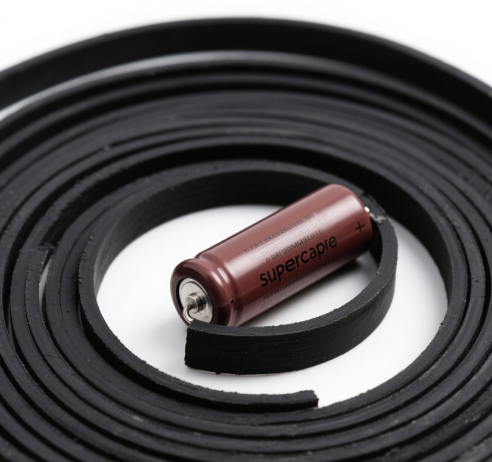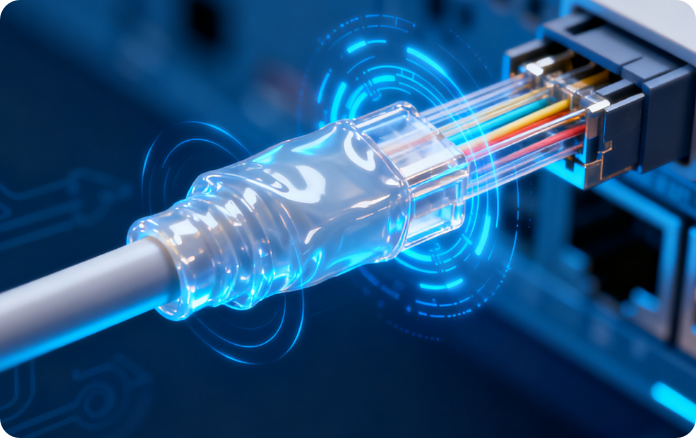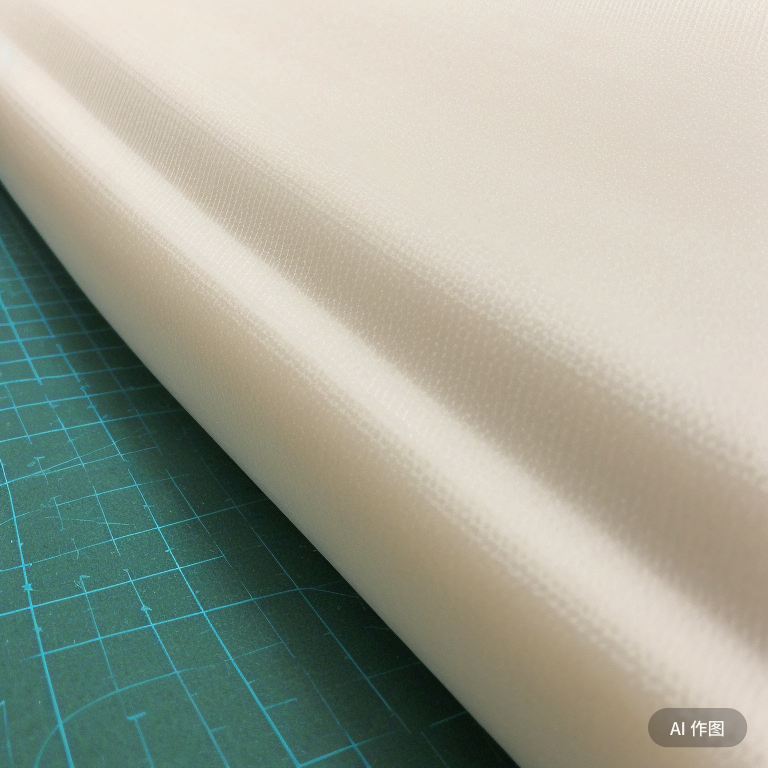Four-dimensional Analysis of High-end Application Scenarios of Gold/Copper Conductive Rubber
I.Electronic and Communication Equipment: The Core Carrier of Electromagnetic Protection in the High-frequency Era Driven by the iteration of 5G and 6G technologies, electronic devices are evolving towards high frequency, miniaturization, and integration. Signal transmission in the frequency band above 40GHz poses stringent challenges to electromagnetic shielding and sealing. Gold/copper conductive rubber, with an ultra-low volume resistivity of 0.004Ω·cm and a shielding effectiveness of 110dB@10GHz, has become the core material of the AAU unit (active antenna unit) of 5G base stations. The electromagnetic shielding seals made from it can suppress signal leakage in the millimeter-wave band (24-40GHz), and at the same time, through IP68-level waterproof sealing (resistant to soaking in 1.5m water depth for 24 hours), it can prevent water vapor from eroding the PCB board.

A typical application is the SMT conductive silicone elastic sheet, which has an ultra-thin design with a thickness of 0.3-0.8mm. It is directly welded to the edge of the high-density PCB board through surface mount technology (SMT), replacing traditional metal elastic sheets (such as beryllium copper reeds). Compared with the metal solution, its advantages are as follows:
Reliability improvement: The rubber matrix absorbs vibration energy, can withstand 100,000 cycles of compression without deformation, solving the problem of metal fatigue fracture;
Production efficiency optimization: The whole-board mounting process shortens the assembly time of a single component from 30 seconds to 5 seconds, adapting to the automated production line;
Signal integrity assurance: The contact impedance is ≤50mΩ, lower than the 100mΩ of the metal elastic sheet, reducing the transmission loss of high-speed signals (such as PCIe 5.0).
II.Aerospace and Military Industry: The Reliability Provider in Extreme Environments
Aerospace equipment faces extreme tests such as temperature alternation from -200°C to 200°C, a vibration acceleration of 100g, and space radiation (such as 10^5Gy ionizing radiation). Gold/copper conductive rubber constructs an anti-radiation conductive network through copper particles coated with nano-gold (the diameter of the core-shell structure is 50-100nm). The gold layer blocks the oxidation of copper by α/β particles, and the copper core provides a highly conductive skeleton, enabling the material to maintain an elastic recovery rate of 80% in a liquid nitrogen environment at -196°C, with a resistivity fluctuation of <5%.
In the lunar surface sampling and encapsulation system of the Chang’e-5 detector, a sealing ring prepared from carbon nanotube/gold-copper composite rubber realizes three core functions:
Deep cold sealing: In the lunar night environment at -180°C, the stress at the sealing interface remains ≥1.2MPa, preventing the intrusion of lunar dust particles (with a particle size ≤10μm);
Static electricity discharge: The volume resistivity is 10^3Ω·cm (@-180°C), quickly releasing the accumulated static electricity charges on the equipment surface (≤100V) to avoid electrical breakdown;
Structural support: The tensile strength is ≥8MPa, able to withstand the 50N impact force when grabbed by the robotic arm, superior to traditional pure silicone rubber (4MPa).
III. New Energy and Automotive Industry: Multi-dimensional Empowerment in the Wave of Electrification
The three-electric system (battery, motor, and electronic control) of new energy vehicles has complex requirements for materials, including high temperature resistance (continuous operation at 150°C), resistance to electrolyte (in a strong alkaline environment with a pH of 12), and low outgassing (to avoid gas accumulation in the battery compartment). Gold/copper conductive rubber plays a dual role in the battery management system (BMS):
Conductive connection: As a flexible conductive gasket between battery modules, it replaces traditional copper busbars, can absorb the expansion stress during battery charging and discharging (strain compensation rate of ±5%), and at the same time achieve a low contact resistance (<20μΩ·cm²), reducing energy loss;Electromagnetic shielding: In the high-frequency noise environment (10-100MHz) of the motor controller, the shielding effectiveness is >90dB, ensuring the signal purity of the MCU chip and avoiding the risk of mis-triggering.
In the application case of the battery pack of a domestic electric vehicle, the battery module sealed with gold/copper conductive rubber still has an insulation resistance of >100MΩ (the initial value is 150MΩ) after 1000 charge-discharge cycles, significantly better than silver-plated copper rubber (it drops to 50MΩ after 500 cycles), which is attributed to the anti-oxidation protection of copper by the gold layer (the growth rate of the copper oxide layer is reduced by 60%).
- High-end Manufacturing and Precision Instruments: The Performance Guardian with Micron-level Precision
In precision scenarios such as semiconductor lithography machines (with an accuracy of ±5nm) and MRI medical equipment (with a magnetic field strength of above 3T), electromagnetic interference (EMI) and signal distortion can lead to the failure of key functions. Gold/copper conductive rubber achieves the following through micron-level uniform dispersion technology (with a filler dispersion degree of ≥98%):
Ultra-precision sealing: In the semiconductor wafer transfer cavity (with a cleanliness of Class 10), a 0.5mm-thick sealing gasket can block particles at the 0.1μm level. At the same time, through the elastic design with a Shore hardness of A 40-50, it can compensate for the thermal expansion displacement of the cavity (±10μm);
Low magnetic interference: The magnetic permeability of the metal filler is ≤1.1μ0, much lower than that of pure iron (2000μ0), meeting the non-magnetic requirements of MRI equipment for surrounding materials and avoiding image artifacts.
Innovative application in the medical field – flexible EEG electrode sheets, made of 0.2mm-thick gold/copper conductive rubber with a hydrophilic modification on the surface (contact angle <30°), achieve three breakthroughs:
Biocompatibility: The cytotoxicity rating is 0 (in accordance with the ISO 10993 standard), and it can be worn continuously for 72 hours without skin irritation;
Signal quality: The contact impedance with the skin is <1kΩ (1.5kΩ for traditional Ag/AgCl electrodes), and the signal-to-noise ratio of EEG signals is increased by 30%;
Wearing comfort: The elongation rate is ≥200%, adaptable to different head shapes, and the signal stability during exercise is 50% higher than that of rigid electrodes.
Application Trends and Technological Evolution
With the development of various fields towards high frequency, extremity, and precision, gold/copper conductive rubber is accelerating its integration with emerging technologies:
5G/6G: Develop a low-loss formula with a dielectric constant ≤3.0 to adapt to high-frequency boards (such as Rogers 4350B);
Aerospace: Explore the graphene/gold-copper composite system to improve the resistance to atomic oxygen (extend the service life to more than 10 years);
New energy vehicles: Study heat-conductive conductive rubber (with a thermal conductivity >1W/(m·K)) to solve the problem of local overheating during fast battery charging.
















